It's no secret to informed movie viewers that Lucio Fulci's The Beyond is both adored and reviled in almost equal measure. Beautiful, surreal and revoltingly grotesque the film retains the ability to shock with its series of nasty set pieces, while remaining consistently frustrating for its incoherent plotting and inconsistent performances. For patient viewers in the right state of mind, however, The Beyond is the ultimate haunted house nightmare, crafted by a master of the genre working at the height of his powers.
We begin at the Seven Doors Hotel in Louisiana way back in 1927, where an accused warlock named Schweick is captured and crucified in the basement by an angry mob which, oops, happens to open one of the seven gates to hell. After the opening credits we flash to the present (aka 1981) where the young Liza (Catriona MacColl) has inherited and begun to renovate the crumbling hotel. Soon, however, strange accidents begin to occur around the property, including a painter falling off a scaffolding after witnessing some ghostly eyes inside. But it's when Schweick's body is uncovered by an unfortunate plumber that hell begins to (literally) break loose. Liza is helped by the blind, mysterious Martha (Veronica Lazar) and by the skeptical doctor John McCabe (David Warbeck), but things begin to rapidly spin out of control as hell starts to spill out of the gate.
Got that? Good. Now ignore it. Because if you're looking for this film to make a lot of narrative sense you're going to be sorely disappointed. What Fulci has on the menu is a series of surreal visions of hell on earth served up in no particular order, but with a very simple goal: keep the audience in a constant state of uneasiness. Eyeballs are mangled, faces are melted, and brains are splattered everywhere. Scares of spiders? Heights? Darkness? Zombies? Ghosts? Hospitals? It's all grist for Fulci's mill, and attempting to enjoy it on this level - as something designed to tap into your basest fears - is really the only way to understand its devoted cult following.
Anyone even peripherally familiar with Fulci's oeuvre won't be surprised to hear that the level of violence on display is truly astounding, even by modern standards. But this is no simple exercise in grand guignol. Fulci constructs his scenes with a master's touch, doing the very least necessary to create sympathetic characters before immediately thrusting them into the worst imaginable situations. When the plumber's wife visits the hospital to dress his corpse, it's only minutes till her face is being melted horrifically (and confusingly) by acid, her skin popping and bubbling in a revolting rainbow of colour. In many ways these are the cheapest kind of thrills, but they are thrills nonetheless.
Which isn't meant to discount the actual suspense that Fulci and his collaborators bring to individual scenes. Fabio Frizzi's creeping, Goblin-like score wring operatic tension throughout, and Fulci makes great use of his New Orleans locations. Certain images linger in the brain long after watching, particularly the shows after Liza and John mistakingly open the gates of hell and rush out the hotel, the camera lingering as the silhouetted zombies rise up in the windows. Much has also been made of the film's final shocking minutes which build wonderful and effectively without the use of gory effects. With Fulci the destination is rarely in doubt, but his obvious skill makes the journey one well worth travelling.
Previously better known as 7 Doors Of Death (in a severely cut form), in the 90s The Beyond was restored and enjoyed a brief theatrical release thanks to Quentin Tarantino's Rolling Thunder Pictures and Grindhouse Releasing. The Anchor Bay release of The Beyond is presented in its original 2.35:1 aspect ratio in a clean and colorful print featuring only minor print damage, and this uncut presentation will be a revelation to those used to the shoddy VHS versions. The sound options are extensive, with English tracks available in Dolby Digital Surround 5.1 and the original mono English, as well as an Italian language track. Like with most Italian films of the time, The Beyond was filmed silent with a mixture of English speaking and Italian actors who then dubbed their voices in post-production. In this case, where even many of the Italian actors are mouthing broken English, the English options are likely the best.
Available previously in a limited edition tun (which included lobby cards and a booklet on Fulci and his films), Anchor Bay has included some extensive special features which shed a little light on the film's worldwide fandom. Most substantial is a feature length commentary which features stars David Warbeck and Catriona MacColl. Recorder shortly before Warbeck's death from cancer - he references his sickness several times throughout - the two are nonetheless humourous and relaxed, relating anecdotes about working with Fulci (who could apparently be a bit of a terror on set) while poking fun at the film's shortcomings. It's a refreshingly honest commentary and very entertaining.
Images From The Beyond is a 16 minute grab bag of special features, including a collection of posters and marketing art, behind the scenes photos, and some short interview segments with Warbeck, MacColl and Fulci himself. Three trailers for the film, including the U.S. re-release, International and German trailers, are available but all of them contain significant spoilers so viewers should be aware going in. There's also a forgettable video for the song And You Will Live In Terror by the thrash band Necrophagia (directed by Deadbeat At Dawn's Jim Van Bebber) which features gory clips from the movie interspersed with lousy shot-on-video footage of the band performing.
Also interesting is a full color version of the film's pre-credit sequence taken from its German release. Stripped of the sepia tone used in the standard version, the scenes of Schweick getting whipped with chains and melted with lime are even more unpleasantly gruesome. With a little bit of digging there are also two neat easter eggs: a trailer for Fulci's film Cat In The Brain, and the alternate opening credits from the 7 Doors Of Death version of the film.
As expected, chapter selections and optional subtitles round everything off. I should also mention the wonderful menus which take great advantage of Frizzi's score.
Those new to The Beyond often end up wondering what all the fuss is about, and it would be unfair to pretend that the film doesn't have some serious flaws. What makes the film work is a willingness to go to some seriously dark places and the increasing sense of dread which connects it. It's certainly not as stylish as the works of Bava or Argento, but there are truly stirring images here which trump both. Not a masterpiece, but as close as Fulci ever came.

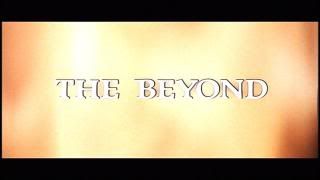
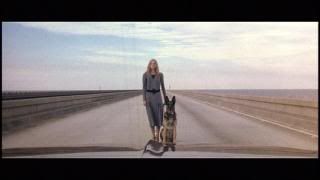
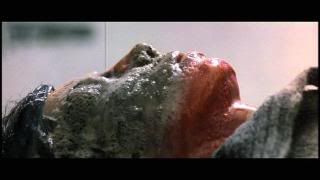
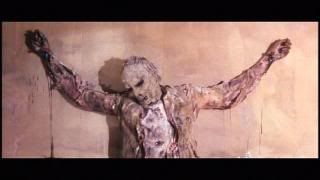
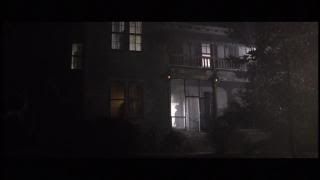
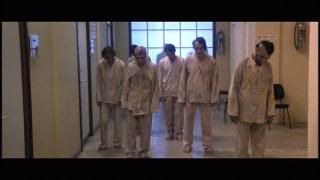
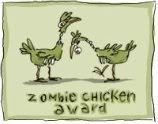








No comments:
Post a Comment